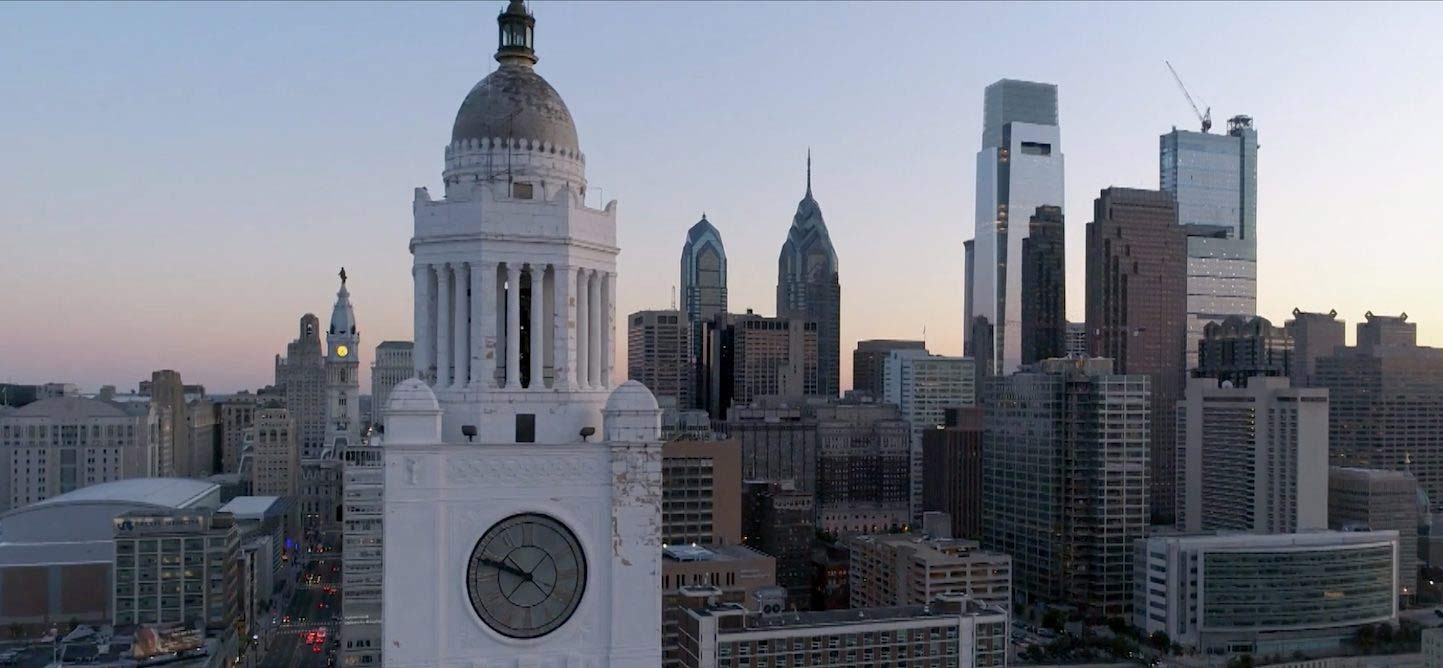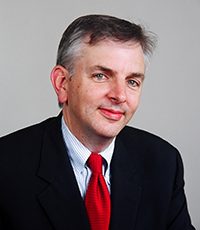News Details
Philanthropy Class Provides $55K in Grants to Local Nonprofits Amid COVID-19 Crisis

Authored by: Alina Ladyzhensky
Photography by: JTwo Films
Student Life
06/23/20
As safety measures around the COVID-19 pandemic halted all on-campus activity at Penn, Doug Bauer and Greg Goldman— like many instructors around the country— found themselves rapidly adapting the course they co-teach, Philanthropy and the City, to a virtual format. But a sudden pivot to online learning was far from the only memorable part of the semester for the course’s spring 2020 cohort.
As a class already designed to bridge theory and practice, the real-world applications of Philanthropy and the City’s curriculum took on an particularly profound significance, bringing a spotlight on what nonprofits and funders are doing to address the ongoing pandemic—and the urgent work that still needs to be done.
Cross-registered in the graduate Nonprofit Leadership program at Penn’s School of Social Policy & Practice (SP2) and the undergraduate Urban Studies program at the School of Arts and Sciences, Philanthropy and the City explores how urban communities are shaped by the nonprofit sector and philanthropic funding. Bauer and Goldman have co-taught the course for more than two decades, first originating in the Urban Studies program. The unique aspect of offering real grant money to local nonprofits, however, developed after the class became part of the NPL curriculum.
“To the great credit of the leadership in the Urban Studies program, they recognized the role of philanthropy in the nonprofit sector, and the health and vibrancy of urban communities such as Philadelphia. When [NPL program director] Peter Frumkin came to the School of Social Policy & Practice, I knew him from his previous positions at UT Austin. Peter is one of the leading academics in the country on the study of philanthropy in the nonprofit sector, and when we reconnected, he wanted the course to be part of the NPL curriculum,” Bauer explained.
“Just prior to becoming part of NPL, we had a donor express interest in providing funds for the class to actually grant to deserving nonprofits. That changed the entire tenor of the class from a focus on academic and intellectual discussion about the content, and essentially bridging theory and practice.”
Since its inception, the course has focused on issues affecting Philadelphia, and the nonprofit sector as it relates to the city’s civic structure. During the first few class meetings, Bauer and Goldman ask students to identify what they feel are the top five most pressing issues facing the city. Students then divide into teams around each issue. They research these target issues, and each team creates a pop-up foundation with a clear vision, mission, values, and guidelines to drive the grantmaking process.
In the second half of the semester, students choose 10 nonprofits in their respective areas and solicit proposals from five of those organizations. They review the proposals, documentation, and financial information for each, and conduct site visits with the organizations’ leadership. Students then take the quantitative and qualitative information they collect and put it through an evaluation process that they develop. Following this, each team selects the highest performing nonprofit and gives them a grant. Teams present their pop-up foundations and discuss what they discovered in their due diligence processes, as well as their ultimate winner, during the final class meeting.
As the semester got underway, all proceeded according to the usual timeline. The spring 2020 cohort chose to focus on the issues of youth arts education, women’s health and wellness, educational equity, recidivism, and homelessness. Then came the COVID-19 epidemic— and the need for a revised process.
“It was really important that Penn extended spring break by an extra week—it gave us time to think about how we wanted to execute the second half of the semester. We did this in a very transparent and open dialogue with the students,” Bauer said. “Our first class on Zoom was very emotional and powerful. Students shared what they were dealing with, and it was important to take that time. Then we talked about where we were in the process, and what they wanted to do.”
“We didn’t feel that it was fair to go out and solicit proposals from five well-meaning organizations per pop-up foundation and say, ‘You have a one in five chance of getting this money.’ The competitive nature would normally be in place and is a real factor in philanthropy, but we didn’t feel it would be right in the context of COVID,” he continued. “We asked the students if they would consider not doing that and continue to look at five or ten nonprofits— but instead of soliciting all of them, focus on one nonprofit and work with them on developing as good a proposal as possible. They all agreed that it was absolutely what they wanted to do, and that they would conduct due diligence via Zoom, et cetera. That was really important.”
Though their target issues were already chosen, Bauer and Goldman gave the teams flexibility to decide if they wanted to shift entirely to a COVID-19 focus or continue with their chosen issues. The youth arts education, educational equity, and homelessness teams stayed with their chosen areas, focusing on organizations that were working to meaningfully address the COVID-19 crisis within their local communities. These groups ultimately identified and funded three organizations: The Village of Arts and Humanities, Public Citizens for Children and Youth, and Prevention Point Philadelphia. Meanwhile, the recidivism and women’s health teams opted to work together in a rapid response mode, combining their resources and impact to support the PHL COVID-19 Fund.
“There are several different funds out there looking at rapid response in a COVID context, and those two groups decided to work with the rapid response fund that had been created by the Philadelphia Foundation and the United Way of Southeastern Pennsylvania. To help facilitate their efforts, we got the person in charge of that fund to Zoom with the class and talk about what the rapid response fund was doing, how it was being executed, where the money was coming from, and who they were giving the money to,” Bauer said. “It was constructive not only for the groups that decided to focus on that fund, but also provided insight to the other groups about how one of the major funding efforts was thinking about the COVID question.”
As the COVID-19 epidemic began to affect all aspects of daily life in Philadelphia communities, students experienced their in-class learning colliding with the ways in which local philanthropic funders and nonprofit organizations faced and addressed unprecedented challenges in real time.
“The COVID-19 crisis was a kind of case-study in how grantmakers and nonprofits must adapt to meet the changing needs of their constituents,” said Caitlin Palmer, NPL ‘21, a student in the spring semester cohort. “As a class of ‘pop-up foundations’, we had the opportunity to pivot in real-time to address the crisis.”
“A challenge for many of us was narrowing our focus to a single target issue, and selecting a single organization to fund. I think this speaks to both the many issues affecting Philadelphia, and the strength of our nonprofit sector. The speed with which many organizations have redesigned their services for virtual or socially-distanced delivery is very impressive – and many have innovated new services to meet the changing needs of their communities.”
Fellow student Olivia Welsh, NPL ‘20, agreed, citing the course’s intersection with COVID-19 relief efforts as a welcome chance to provide immediate and tangible aid during the crisis.
“Facing a new reality, Doug, Greg, and Sam [Harclerode, Teaching Assistant and NPL alum] were agile and flexible and stayed true to the philanthropic aspect of the course,” Welsh said. “I am incredibly thankful that they gave us the option to pivot our initial plans and turn our focus to providing our funds ($11,000) to efforts providing COVID relief… This crisis is the biggest fire that nonprofits and Philadelphia at large are trying to put out, so having the opportunity to contribute to the fight was welcome and appreciated.”
“Regardless of COVID, the course was practical, realistic, and gave me an opportunity to create real impact, which is a welcome change from the abstraction of theory that is so common in my course— the pandemic only accentuated this,” she added. “It also gave me the chance to throw a few punches at COVID instead of just taking them, as I reconsider my life’s trajectory as a graduating senior.”
In total, the students provided $55,000 in grant funding to their chosen organizations. Reflecting on the semester, Bauer underscored how students were able to learn and accomplish a great deal in particularly trying circumstances.
“I think it was very rich intellectually for the students, and I have to say, they made really good decisions for the recipients of their money in a very concentrated amount of time,” he said.
“What’s important to understand is that the act of philanthropy and the execution of philanthropy are more of an art than a science. Like any great art, there is a discipline behind it. We try to give the students a sense of that discipline—doing good, thoughtful, meaningful, and engaged philanthropy— in a very concentrated fashion over the course of a number of weeks, rather than months or years.”
As Palmer pointed out, engaging with area nonprofits during the epidemic further emphasized the need for systemic change in order to better orient philanthropy around meeting the needs of underserved and vulnerable populations in Philadelphia—both through and past the COVID-19 situation.
“The COVID-19 crisis is highlighting the gross systemic inequities already present in our society. The disproportionate effects of this crisis on our most vulnerable populations cannot be ignored: higher mortality rates in black and brown communities, the failure of our healthcare and education systems, uncontrolled infection rates in prisons, jails, and ICE detention centers, a steadily increasing wealth gap. It is also highlighting how many of these inequities are connected,” she said. “It is a clear opportunity to restructure our systems to be more equitable and inclusive. This is definitely a moment for philanthropy at all levels.”
